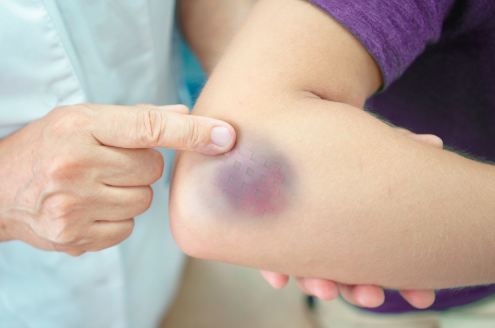As winter fades and warmer weather begins to roll in, many of us are eager to soak up the sun. However, for some, the arrival of spring and summer brings with it the unwelcome return of eczema flare-ups. Among the various types of eczema, dyshidrotic eczema (also known as pompholyx) can be particularly troublesome, causing those itchy, red bumps to appear on the hands and feet.
What Is Dyshidrotic Eczema?
Dyshidrotic eczema is a form of eczema that typically manifests as tiny, fluid-filled blisters on the palms of the hands, the sides of the fingers, and the soles of the feet. These blisters often appear suddenly and can be incredibly uncomfortable, bringing with them both intense itching and pain.
While the exact cause of dyshidrotic eczema remains unclear, it is believed to be linked to an overactive immune system. It may also be triggered by various factors, including allergens, irritants, or even stress.
Who Is Affected by Dyshidrotic Eczema?
Dyshidrotic eczema most commonly affects adults between the ages of 20 and 40, with women being more frequently impacted than men. Individuals who have a history of other allergic conditions, such as atopic dermatitis (the most common form of eczema), hay fever, or asthma, may be more susceptible to developing this type of eczema.
Managing Dyshidrotic Eczema
If you suffer from dyshidrotic eczema, you know how uncomfortable it can be. Fortunately, there are several strategies for managing the condition and alleviating symptoms:
- Moisturizing: Keeping the skin hydrated is essential. Use a thick, fragrance-free moisturizer to help lock in moisture and reduce dryness.
- Avoid Triggers: Try to identify and avoid potential triggers, such as specific allergens or irritants that might cause flare-ups. Wearing gloves when handling cleaning products or using harsh soaps can help protect the skin.
- Managing Stress: Since stress is a common trigger for eczema, finding ways to reduce stress, such as through relaxation techniques or regular exercise, can be beneficial.
- Topical Treatments: Over-the-counter creams or ointments containing hydrocortisone can help reduce inflammation and ease the itching associated with dyshidrotic eczema. In more severe cases, a doctor may prescribe stronger treatments.
- Cold Compresses: Applying a cold compress to the affected areas can help soothe the itching and reduce swelling.
- Seeing a Dermatologist: If your eczema doesn’t improve with home remedies or over-the-counter treatments, it’s a good idea to consult with a dermatologist for personalized care and treatment options.
While dyshidrotic eczema can be frustrating, understanding its causes and triggers—and knowing how to manage the symptoms—can help you cope with the condition more effectively. Remember, it’s important to practice patience and give your skin the time and care it needs to heal.

Sophia Reynolds is a dedicated journalist and a key contributor to Storyoftheday24.com. With a passion for uncovering compelling stories, Sophia Reynolds delivers insightful, well-researched news across various categories. Known for breaking down complex topics into engaging and accessible content, Sophia Reynolds has built a reputation for accuracy and reliability. With years of experience in the media industry, Sophia Reynolds remains committed to providing readers with timely and trustworthy news, making them a respected voice in modern journalism.
